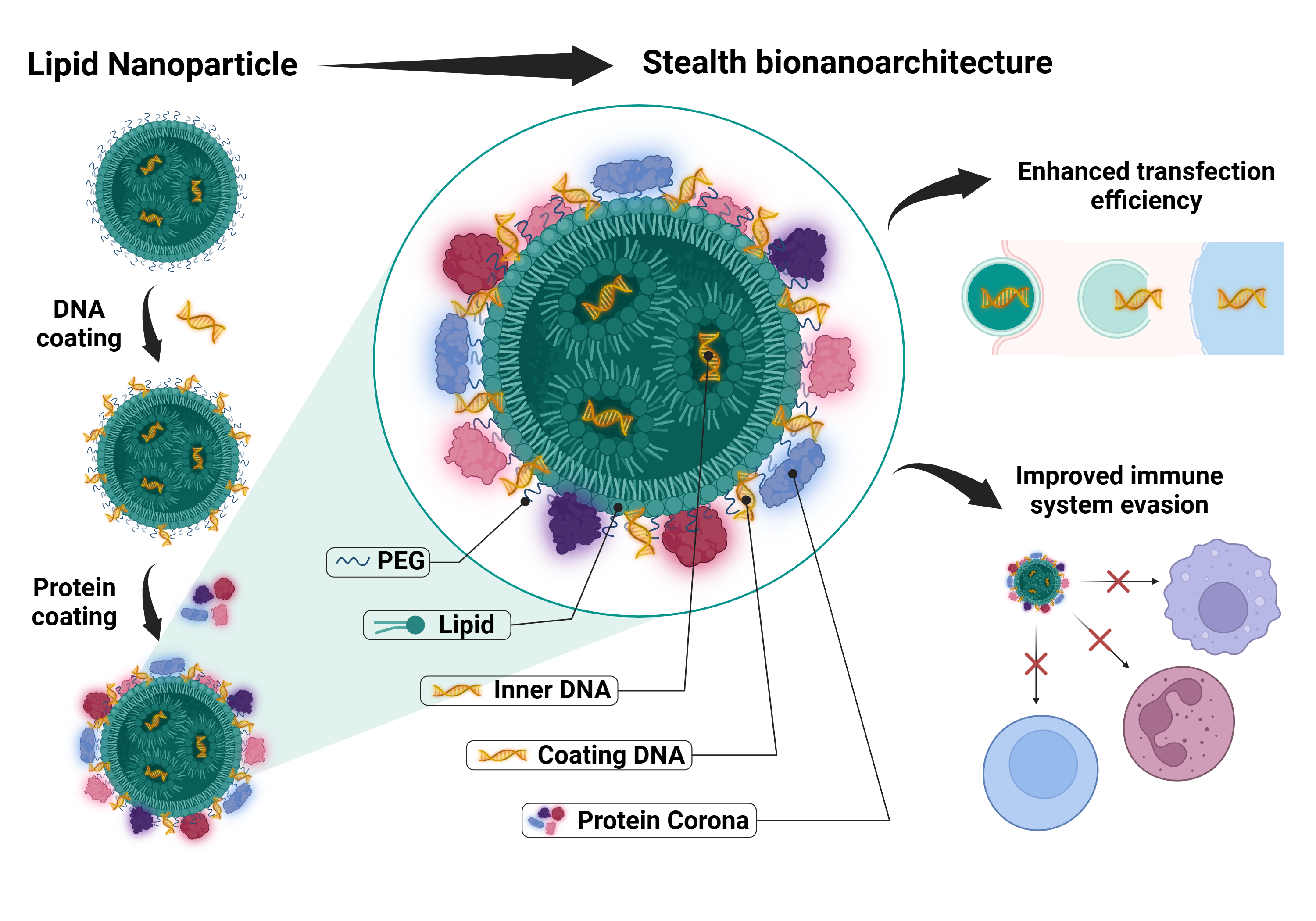PRESS RELEASE: Fighting cancer and genetic diseases with lipid nanoparticles
|Researchers at Sapienza University’s NanoDelivery Lab, supported by the European research infrastructure consortium CERIC-ERIC, have developed a technology to transport large DNA molecules, paving the way for new targeted gene therapies. The results of the study have been published in Nature Communications.
The rise of lipid nanoparticles has revolutionised the field of gene therapy. Also used in the development of messenger RNA (mRNA)-based vaccines against COVID-19, lipid nanoparticles have shown great success in several clinical applications. A study by Sapienza University’s NanoDelivery Lab (Rome), published in Nature Communications and carried out with the support of CERIC-ERIC (Central European Research Infrastructure Consortium), has shed light on the ability of these particles to effectively encapsulate large DNA molecules.
The research, coordinated by Giulio Caracciolo and Daniela Pozzi, has been carried out in collaboration with other Italian and European institutes (such as the Pasteur Institute in Italy, the Scuola Normale Superiore in Pisa and the Technical University of Graz in Austria) and has been supported by the CERIC-ERIC consortium, which provided the necessary instrumentation to study the particles synthesised by the research team: ‘the use of small-angle X-ray scattering was essential to shed light on the internal structure of lipid nanoparticles,’ explains Heinz Amenitsch, researcher at the Technical University of Graz and director of the Austrian CERIC-ERIC Partner Facility.
These particles have a unique morphology, and demonstrate an improved transport capacity compared to traditional formulations, opening the way to new targeted gene therapies.

The designed technology uses lipid nanoparticles capable of incorporating large DNA. The resulting particles are then further engineered and coated with a biomolecular crown made of DNA and plasma proteins: following this modification, the resulting lipid nanoparticles become a true biological nano-architecture capable of evading the immune system and increasing the effectiveness of gene therapy.
‘The innovative approach of our study demonstrates an improved DNA transport capacity compared to classical formulations, while ensuring greater stability and reduced immune response. – explains Giulio Caracciolo of Sapienza University – This could enable the correction of genetic defects and provide tools for the fight against cancer, representing an important step towards innovative therapies for diseases that are difficult to treat with the methods currently used in clinical practice’.
Original article:
Structuring lipid nanoparticles, DNA, and protein corona into stealth bionanoarchitectures for in vivo gene delivery – Renzi, S., Digiacomo, L., Pozzi, D. et al. – Nature Communications (2024) https://doi.org/10.1038/s41467-024-53569-8
—
CERIC-ERIC is a research infrastructures consortium founded by the European Commission in 2014. It offers researchers and industry a single point of access to more than 60 techniques and laboratories in eight Central and Eastern European countries for multidisciplinary research at the micro- and nano-level in the fields of advanced materials, biomaterials and nanotechnology. In CERIC’s laboratories, materials can be analysed and synthesised and their structure investigated by combining techniques based on the use of electrons, ions, neutrons and photons.
Access to CERIC’s research services is through international calls for proposals that reward the best projects and provide for the publication of their results. In addition, there is commercial access open to companies and for applied research involving the commercialisation of results.
CONTACTS: CERIC Press Office: press@ceric-eric.eu
Marcello Turconi: marcello.turconi@ceric-eric.eu



